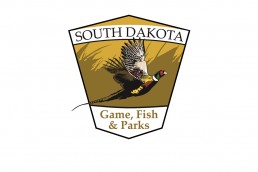Dakota Corner: New, Modified Aquatic Invasive Species Rules Finalized
SHARE THIS POST
The South Dakota Game, Fish and Parks (GFP) Commission recently finalized new aquatic invasive species (AIS) rules and modifications to the existing ones in an effort to target the most likely ways these species are moved from water body to water body.
These rules are not effective until 20 days after they are filed with the Secretary of State’s Office. GFP will continue to keep anglers and boaters informed as the rules move through the process and what the final date of implementation will be later this spring.
New Rules:
Containment waters
The Commission classified Lewis and Clark Lake, McCook Lake, the Missouri River from Gavins Point Dam to the Big Sioux River and waters in other states that contain zebra or quagga mussels as “Containment Waters.” This designation allows for subsequent regulations to refer specifically to these waters.
Local boat registries
The Commission authorized the department to create “Local Boat Registries” at containment waters. Initial plans for Local Boat Registries include a “free-transportation zone” where boats may be transported without being decontaminated as well as provisions for allowing overwinter boat storage with AIS attached to the vessel. Boats included in the registry may not launch into any other water body or be transported outside the transportation zone without being decontaminated.
Are you enjoying this post?
You can be among the first to get the latest info on where to go, what to use and how to use it!
Residual water decontamination
One of the top ways that zebra mussels spread is through the transport of water infested with zebra mussel larvae (veligers). Many types of recreational boats, such as wakeboard boats, are equipped with one or more ballast tanks that hold water to create a larger wake for stunts and tricks. Due to their design, most of these tanks cannot be fully drained of water. If a wakeboard boat is used on containment water the ballast tanks can hold veligers that could then make their way into the next water body visited. In an effort to limit the movement of water, the Commission created a new rule that requires boat owners whose boats have been removed from containment waters and are holding 1 or more gallons of water to decontaminate those boats before they can be launched again.
Moored boats
Boats that are moored or stored in a containment water have a very high likelihood of becoming infested with zebra mussels. Zebra mussels can reproduce from May through mid-November in South Dakota. This time period encompasses nearly the entire boating season, so anytime a boat sits in an infested water for more than a few days it is possible that mussels will attach to it. The Commission created a new rule that will require decontamination of boats stored in a containment water for three or more days. This decontamination must be completed before the boat is launched on the next trip.
Modifications To Current Rules:
AIS restrictions
The Commission created two additional exceptions to the AIS possession and transportation restrictions. Participants in a local boat registry and department-approved businesses will be permitted to possess and transport boats with AIS attached or on board.
Watercraft restrictions
The Commission added additional language to this rule that would allow participants in a local boat registry to launch their boats into the water listed in the registry with AIS attached. This means that a boater registered in the Lewis and Clark Lake Boat Registry could launch back into Lewis and Clark Lake without removing mussels that may be attached to the boat.
MWO
SHARE THIS POST
Did you enjoy this post?
You can be among the first to get the latest info on where to go, what to use and how to use it!



